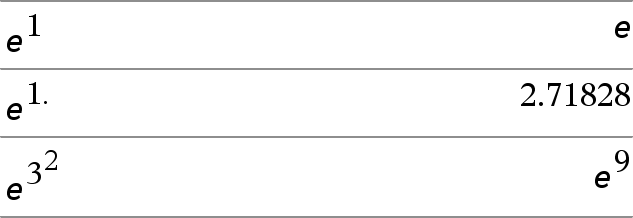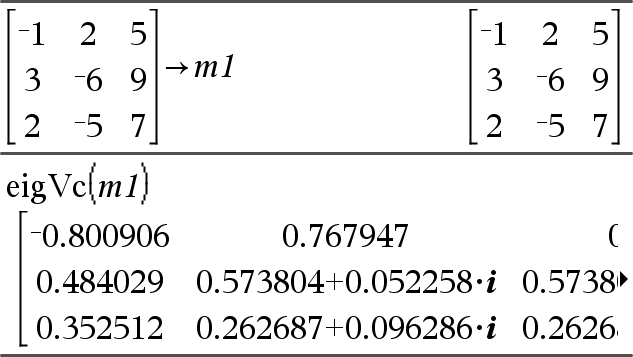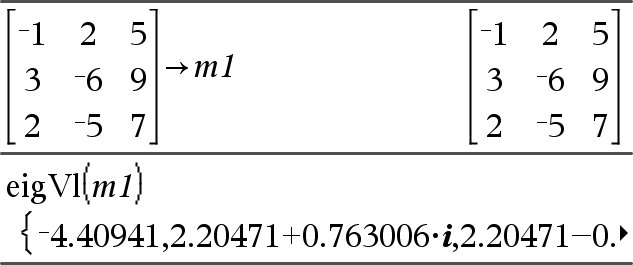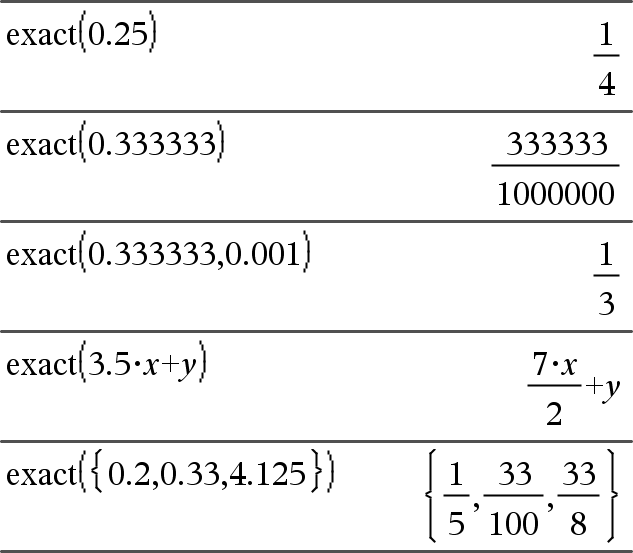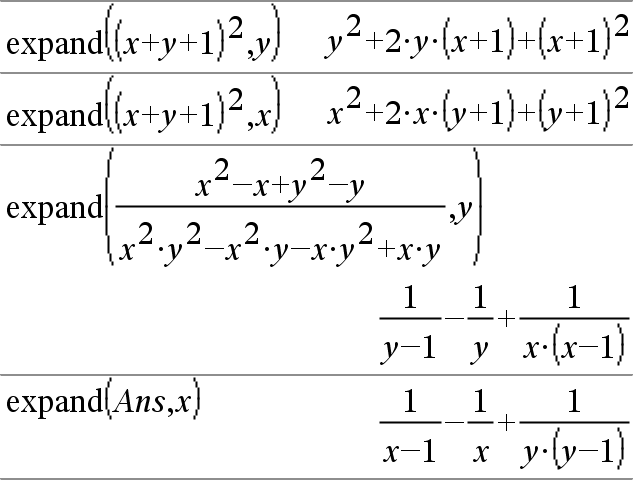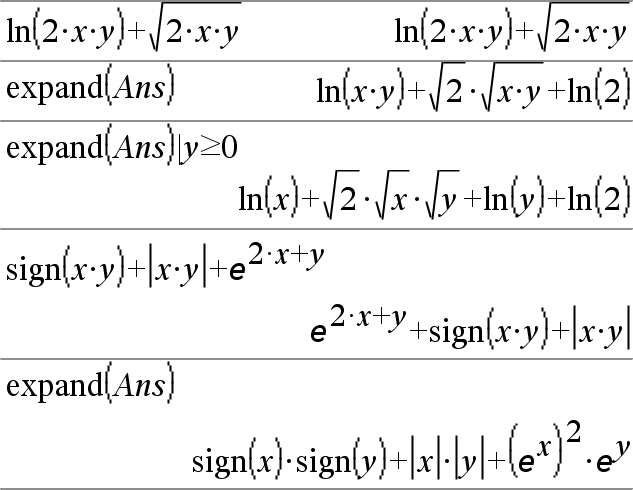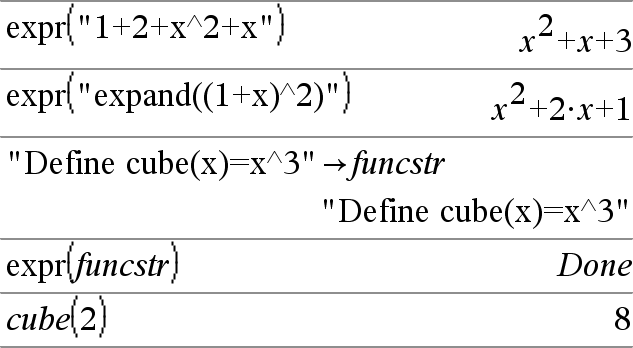|
euler(Expr, Var, depVar, {Var0, VarMax}, depVar0, VarStep [, eulerStep]) ⇒ matrix
euler(SystemOfExpr, Var, ListOfDepVars, {Var0, VarMax}, ListOfDepVars0, VarStep [, eulerStep]) ⇒ matrix
euler(ListOfExpr, Var, ListOfDepVars, {Var0, VarMax}, ListOfDepVars0, VarStep [, eulerStep]) ⇒ matrix
Uses the Euler method to solve the system

with depVar(Var0)=depVar0 on the interval [Var0,VarMax]. Returns a matrix whose first row defines the Var output values and whose second row defines the value of the first solution component at the corresponding Var values, and so on.
Expr is the right-hand side that defines the ordinary differential equation (ODE).
SystemOfExpr is the system of right-hand sides that define the system of ODEs (corresponds to order of dependent variables in ListOfDepVars).
ListOfExpr is a list of right-hand sides that define the system of ODEs (corresponds to the order of dependent variables in ListOfDepVars).
Var is the independent variable.
ListOfDepVars is a list of dependent variables.
{Var0, VarMax} is a two-element list that tells the function to integrate from Var0 to VarMax.
ListOfDepVars0 is a list of initial values for dependent variables.
VarStep is a nonzero number such that sign(VarStep) = sign(VarMax‑Var0) and solutions are returned at Var0+i•VarStep for all i=0,1,2,… such that Var0+i•VarStep is in [var0,VarMax] (there may not be a solution value at VarMax).
eulerStep is a positive integer (defaults to 1) that defines the number of euler steps between output values. The actual step size used by the euler method is VarStep ⁄ eulerStep.
|
Differential equation:
y'=0.001*y*(100-y) and y(0)=10

To see the entire result,
press 5 and then use 7 and 8 to move the cursor.
Compare above result with CAS exact solution obtained using deSolve() and seqGen():


System of equations:

with y1(0)=2 and y2(0)=5
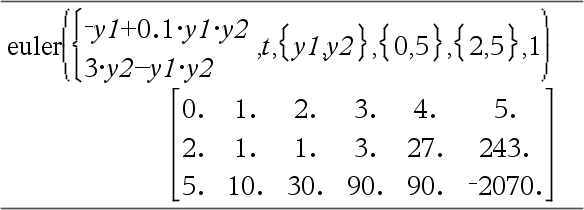
|
